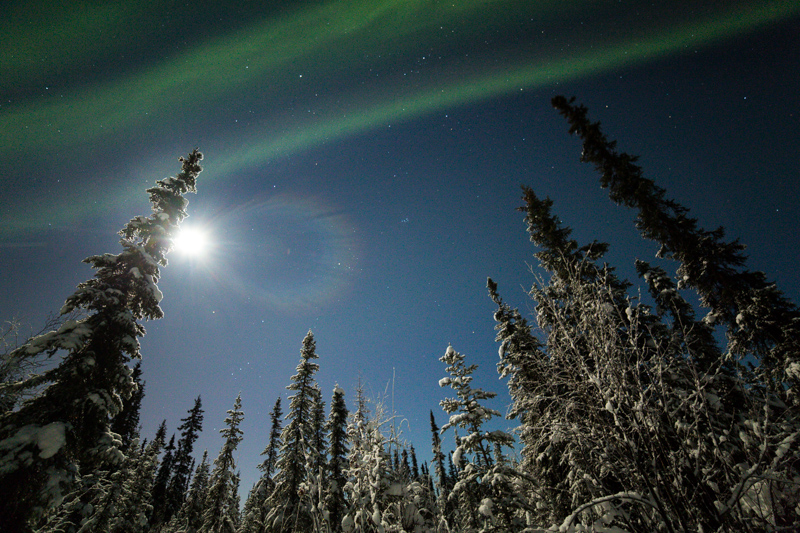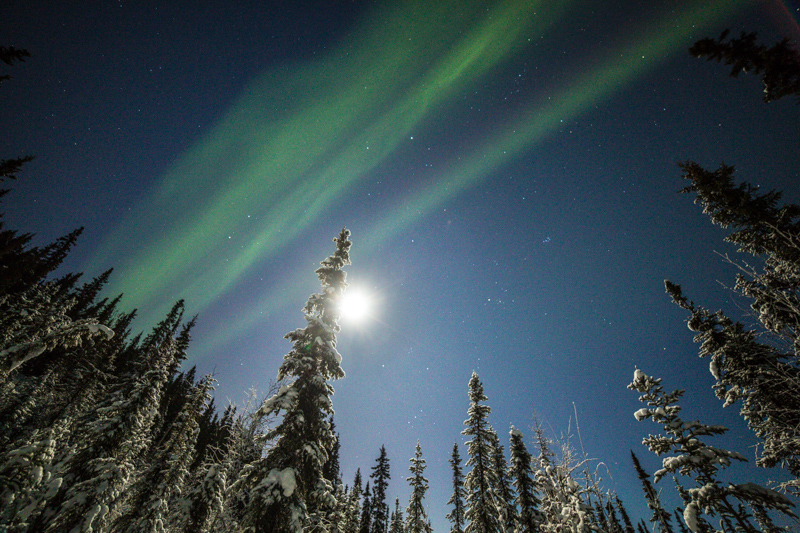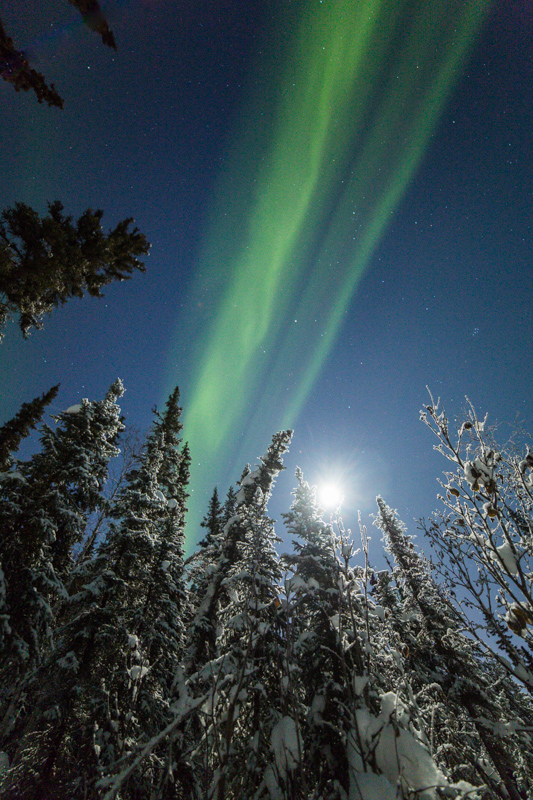When the moon is bright, the aurora, almost always, isn’t. That can be a drag, and why many photographers will time their trips to the north around new moons. Yet, the combination of the two: bright moon, and the aurora borealis, can make for interesting, and occasionally bizarre, ethereal photos.
Composition is even more important when the moon is full. On a moonless night the foreground may fade to black, but moonlight will make every detail visible. The images here I made in my yard. It’s a forested place, so I wandered around a bit looking for the best places to set up the tripod. As you can see, I liked the way the moon looked poking out behind the trees.
Your shutter speeds are going to be shorter. Moonlight is surprisingly bright and there is the very real possibility of burning out the snow-covered foreground if you leave the shutter open too long. These three are all 2 sec exposure at f2.8, ISO 3200.
The aurora will appear fainter on a moon-filled night. There is just now way around this. Even when the moon itself isn’t in your composition, the sky will still be very bright, appearing almost daytime-blue in a long exposure. My recommendation is to embrace the moon and include it in your shot.
Moonlight adds a clear, cool tone to photos. I see these images and can almost feel the cold air of winter. Use the moon, explore it, and if you don’t like the results, well not to worry, it’s already on the wane.
Related posts:
Canon 5D Mark III, Canon 500mm f4L IS, 1.4x TC, ISO 800, f8.0, 1/4000th s...
I've been spending a lot of time thinking about photography recently. Of co...
I've just returned from a guiding a five day trip to the coast of Katma...



